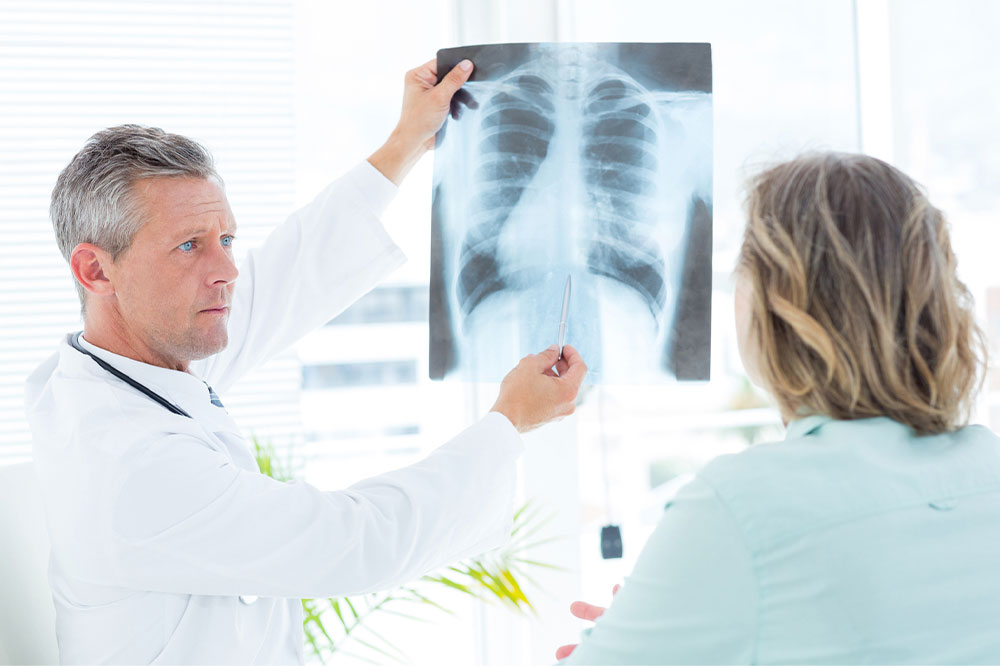
Non-small cell lung cancer types, causes, symptoms, and management
Lung cancer is a more fatal form of cancer than the three most common malignancies combined – colon, breast, and pancreatic cancers. Moreover, as per the National Cancer Institute, non-small cell lung cancer (NSCLC) accounts for approximately 85% of all cancers diagnosed worldwide. Although this type of tumor can be treated even after it spreads to other body parts, early detection and treatment are crucial to increase the chances of survival.
Common types of NSCLC
Squamous cell carcinoma, Adenocarcinoma, and large cell carcinoma are the most common types, among many types of NSCLCs.
- Squamous cell carcinoma – It develops from immature squamous cells found in the epithelium of the bronchial tubes at the core of the lungs. Although this type makes up 25% of all lung cancer cases, it is less common in recent years.
- Adenocarcinoma – Adenocarcinoma is the most common type of NSCLC among people overall, especially in women. It develops from the small airway epithelial cells known as type II alveolar cells, which produce mucus and other substances. Adenocarcinoma accounts for 40% of all lung cancers. Moreover, this type is more prevalent in females than males and it tends to affect younger individuals more frequently than other forms of lung cancer.
- Large cell carcinoma – It typically originates in the middle of the lungs and may spread to nearby lymph nodes, the chest wall, and even distant organs. It makes up for 10% of total lung cancers. In cases where adenocarcinomas don’t have basaloid patterns or any other distinguishing features, they are considered to be a type of large cell carcinoma.
Causes
As per the Centers for Disease Control and Prevention, around 90% of NSCLC cases in the country are caused by tobacco use alone. The other major causes are:
- Asbestos exposure
- Radon gas and radiation effect
- Air pollution (mix of arsenic, beryllium, nickel, chromium, and other agents)
- Coal, wood, and diesel fumes
- Genetics (family history, inherited mutations)
Signs and symptoms
In most cases, lung cancer exhibits no specific symptoms. However, it can be detected after a thorough chest X-ray. One must consult a doctor for proper diagnosis if they observe the following signs.
- Coughing persists or changes from a regular cough
- Chest pain worsens with deep breathing, laughing, or coughing
- Breathlessness or wheezing
- Hoarseness or changes in the voice
- Coughing up blood or rust-colored sputum
- Occasionally developing infections, such as pneumonia
- Fatigue
- Loss of appetite
- Difficulty swallowing
- Swelling in the face and neck veins
Treatments
The treatment options depend on multiple factors, including the cancer stage, tumor types, how much the malignancy has spread, and any mutations in genes.
Laboratory trials are being conducted to discover new treatment options for NSCLC. Meanwhile, the existing common treatment options for NSCLC are as follows:
- Surgery
- Radiation therapy
- Chemotherapy
- Targeted therapy
- Immunotherapy
- Laser therapy
- Photodynamic therapy (PDT)
- Cryosurgery
- Electrocautery
Many treatment options are still in the testing phase and even lung cancer is likely to recur within five years post therapy. Therefore, it is best if NSCLC is detected and treated in its early stages because early medical intervention can help cure the condition.




